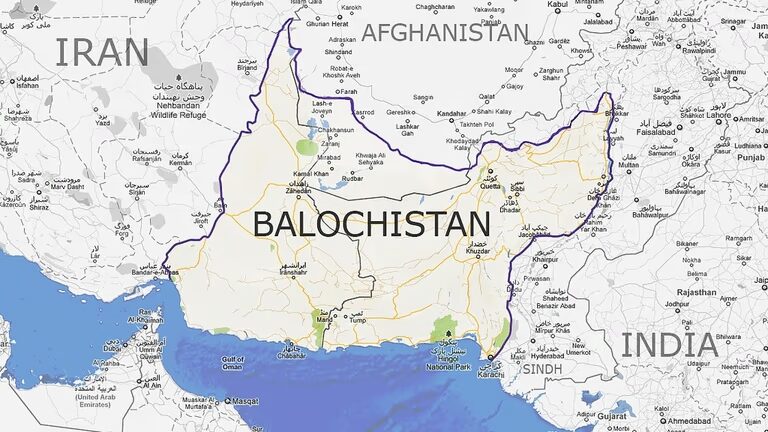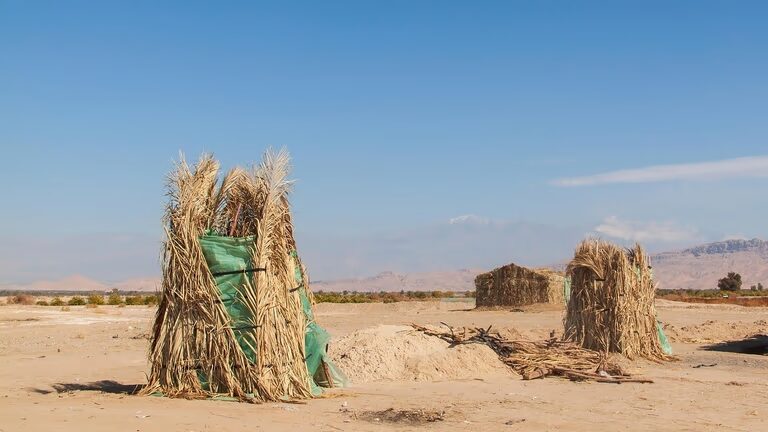
The largest portion of Balochistan is located within Pakistan. Often called a paradox, the place is older in culture, enjoys a beautiful landscape, and finally breathes a very turbulent sociopolitical environment. While nature has blessed Balochistan with an abundance of resources, it is very poor region, which finds its way into the headlines due to the requirements for regular political disorders and autonomy.
It has an identity forged through tribal social systems, linguistic plurality and ancient traditions.
At one point in time, the region is said to have been swept by an amalgamation of ethnic groups, each now contributing to the singular profile of the culture. Tribal loyalties, codes of honour, and systems of customary justice still hold sway over everyday life in many places, especially in rural regions where modern-day state institutions have little presence.
ALSO READ- India’s First 3nm Semiconductor Design Hubs in Noida and Bengaluru
Geography and Demographics-

- Area: Approx. 347,190 sq. km (44% of Pakistan’s total field)
- Population: Estimated at nearly 12–14 million (recently)
- Capital: Quetta
- Languages: Balochi, Pashto, Brahui and Urdu
Balochistan have many deserts, tall mountains and beaches near the Makran coast. If one thinks through the geographical diversity and strategic importance, it distinguishes Balochistan among others.
A Historical Perspective of Balochistan-
From Prehistoric Times to the Colonial Age:
Balochistan occupies an important place in ancient history, dating back to the Mehrgarh culture of 7000 B.C. One of the earliest known for agricultural settlements, it is housed under the ancient history of Balochistan.
On top of that, the entire region has been invaded and run by alien emperors, like the Persians, Greeks, Mauryas and Mughals.
Treaties with local chieftains brought Balochistan under British order, forming the British Raj.
After Partition and State Incorporation:
The scenario variable is Pakistan (incumbent-prevails-Kalat) since it came into presence in 1947.
Annexation is an issue on which both countries share contentious standpoints and stands as one of the major topics of political contention to the present time.
There have been innumerable insurgencies since 1948, each supported by a blend of nationalist and separatist ideologies.
Cultural Heritage of Balochistan-
Ethnic Groups and Language:
- Baloch: A native ethnic group known for its tribes, traditions and hospitality.
- Brahuis and Hazaras: The only minorities having separate identities.
Traditions and Lifestyle:

- Still prevailing in rural lifestyle.
- Tribal hospitality-treat codes of valour and honour (like Balochiwali) are integrated into culture.
Festivities and Commemorations:
The celebration of Jashn-e-Balochistan pertains to the provincial identity.
Religious Composition and Practices-
Religious demographics:
- Sunni Muslims: Approximately 85%
- Shia Muslims (mainly Hazaras): Approximately 10%
- Hindus and Christians: Approximately 5% (mostly in urban central areas such as Quetta and Lasbela)
Religious Harmony/Conflict:
Generally tolerant by nature, Baloch society has, over recent years, witnessed a rise in sectarian tensions, especially in Quetta, where the Hazara Shia members were subjected to violence.
Reports of discrimination and a lack of protection are often made by religious minorities.
Governance Structure-
Administrative Setup:
- It is a constitutional setup whereby the Governor is appointed and the Chief Minister is elected.
- 4 Divisions; 34 Districts; more than 137 Tehsils.
Tribal Influence:
- Tribal head (Sardars) play an essential role inpeople problems.
- The governance is often a marriage of the modern administrative systems with the tribal customs, leading to clashes in policy.
Key Institutions:
Balochistan Assembly: 64 people, consisting of allocated seats for ladies and the left for minority.
Law and order are maintained through the civil police, the Levies Force and the Frontier Corps.
Economic and Strategic Importance-
Bio-gas is found in Balochistan, instead of Bio-gas dark charcoal, cuprum, gold and other elements are also present here.
Challenges-
- Crime is another major obstacle to progress in a region in which terrorism and banditry account for the lion’s share horizontally
- Poor infrastructure
- Illiteracy and bad healthcare
- Poor security leads to a lack of investment
Political Landscape-
Main Political Parties:
It involve the Balochistan National Party, National Party (NP), Zamit I-disadvantage-e-Islam, Pakistan Tehreek-e-Insaf (PTI) and Pakistan People’s Party (PPP).
Tribal vs Political Power:
There may be instances where tribal allegiance prevails over party politics. Most of the elected leaders are also tribal sardars, as a result of which governance and development priorities are set.
Voter Turnout and Representation:
It is because of the following that voter turnout is usually lower than the national average: Lack of trust in the political process, Security threats during elections, Marginalisation of the entire region by federal institutions.
The Balochistan Conflict and Autonomy Demands-
Nature of the Dispute:
Almost all the Baloch nationalists state that Balochistan has been annexed forcefully and that it’s been sucking resources in Balochistan without paying the fair dues for representation.
Some of the issues include:
- Political Marginalization
- Suppression in culture
- Resource Extraction without Reinjection
Insurgencies and Military Operations:
At least five major insurgencies have erupted since 1948.
The current competition began in the early 2000s, resulting in an armed conflict between Baloch separatists and state forces.
The two units mentioned are the Frontier Corps and the Pakistan army, both responsible for maintaining law and order in the province and sometimes accused of human rights violations.
Efforts for Peace:
Amnesty programs and development initiatives are in sight for the federal government.
Gwadar development programs connect Balochistan to the country and also help in making it a part of Pakistan’s economic mainstream.
Human Rights and Media Access-
Disappearance, arrest, and limited access to media are some of the other facets widely reported by HRCP and Amnesty International.
Some threats which journalists face make it very difficult to report objectively from Balochistan.
Education and Social Development Challenges:
- Low literacy rates: Estimated to be 41% (far below the national average)
- Having qualified teachers:It is not a favourite principle for any school to want, and this is nowhere so evident as in the rural schools.
- Cultural prohibition and Gaps: In infrastructure hinder education for female kids.
Recent Initiatives:
Universities like BUITEMS and the University of Balochistan are improving their role in higher education.
Conclusion: The Road Ahead-
Balochistan is really at a crossroads, caught between its tremendous geo-political significance and historical internal conflict.
Balochistan is endowed with a wide array of natural resources along with a strategic position as a conduit between South Asia, Central Asia and the Middle East, The area has sometimes been viewed as the fulcrum of the future developments of Pakistan. However, despite such potential, its people live in an atmosphere of severe deprivation, without any access to basic amenities, health care, education, or a fair share of political representation.
Here, the development of Balochistan must take priority over the seeming politics of many cultural identities that have been elevated to a level obstructing pluralism or integration.
Protecting and promoting human rights is equally important: all citizens of Balochistan, regardless of ethnicity, sect, or political belief, should feel safe, respected and heard. This balanced remedy is bound to settle long-standing grievances in favour of the rightful involvement of the Baloch people in their destiny.
